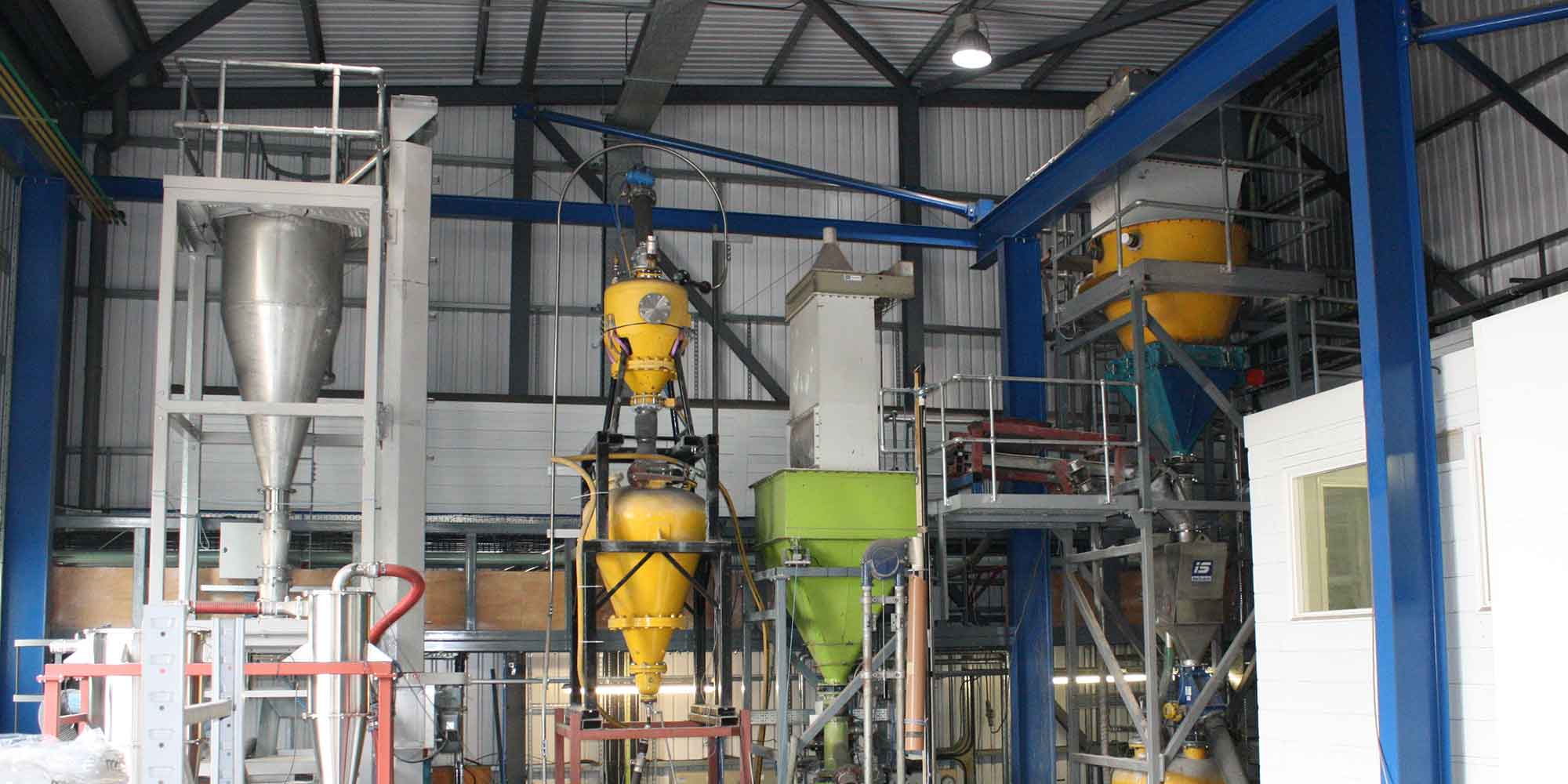Hoppers, silos, bins and bunkers are widely used in industry, and in most instances provide a reliable means for storing and discharging bulk particulates.
However, where such storage equipment has been constructed without reference to the relevant flow characteristics of the material to be stored, problems frequently occur.
Common flow problems
The opportunity for discharge irregularities to occur is influenced by the interaction between the bulk solids properties (most typically its propensity for arching or 'rat-holing'), the geometry of the storage equipment (wall angles, wall finishes, construction details and outlet size) and the feeder installed under the outlet (interface design, functional ability of the feeder to draw material over the outlet cross-sectional area). Deficiencies in any one area will invariably lead to operational issues.
Flow irregularities can take the form of unstable flow (where the rate of discharge fluctuates) or complete stoppages which may be either unstable and therefore intermittent or stable in which case flow is completely halted, The most common forms of flow interruption occur due to a) mechanical arching, b) cohesive arching, or c) rat-holing.
Frequently encountered problems
Aside from immediately apparent operational issues for storage equipment (such as flow unreliability), there are many other issues that arise directly from inappropriately constructed vessels.
Such problems can include:
- exaggeration of segregation effects that occur during vessel loading - which in turn manifests as variation in bulk density, size distribution or blend homogeneity.
- particle damage caused by excessive direct compression loads or shear induced breakage at flow boundaries.
- poor discharge consistency/repeat-ability for filling operations (sachets, sacks, 'big bags', tankers)
- reduced 'live' or reclaimable inventory as a result of storage volume occupied by long term resident material.
- structural failure due to the collapse of fines rich material that can bridge/arch in the parallel section of a silo.
- silo 'quaking' due to 'slip-stick' bulk behaviour induced primarily at the walls of the vessel.
Solutions
None of these types of problem need occur. By measuring the flow properties of the material to be stored, the Wolfson Centre can determine the appropriate hopper angle, outlet size and internal finish needed to make sure reliable operation is achievable. Such recommendations would be made having measured the flow properties of the bulk solid under conditions simulating the process environment and based on the likely 'worst case' condition for the bulk solid (usually a fines rich condition).
Core Flow
Storage vessels that operate with core flow discharge are characterised by the establishment of a preferential flow channel that extends from the outlet to the top surface of the stored material (in the case of a cylindrical vessel discharging by gravity). The establishment of this type of flow pattern dictates that the vessel will operate in a first in, last out mode of stock rotation. The presence of long term resident material in the lower section of the vessel can lead to issues such as cross-contamination, hardening (caking) and loss of live capacity. The presence of the preferential channel dictates that freshly introduced material will experience minimal residence time before reaching the outlet and this often results in fluctuations in bulk density in processes. Despite these drawbacks, equipment operating in core flow are successfully employed a very wide range of industrial operations where the more demanding design requirements for good discharge consistency, minimising segregation and first-in, first-out stock rotation are not present.
Key features of core flow:
- 'first in last out' discharge
- preferential discharge channel
- 'dead' regions of product
- erratic discharge caused by product on product shear during flow
- exaggerates segregation effects of particles
- hopper half angle typically greater than 25° half angle (measured from the vertical)
- poor stock rotation
- good storage capacity for a given headroom - noting that this may not constitute 'live' capacity when in service.
Mass Flow
Mass flow silos offer a wide range of benefits – particularly for less free-flowing or time dependant materials. The key operational characteristic is that the contents of the vessel flow at the wall during discharge. This endows the vessel with a first in, first out discharge behaviour – normalising residence time for the inventory and allowing powders the opportunity to de-aerate before exit through the outlet. The bulk properties (and particularly homogeneity) tend to be very stable – making good process control and consistent product quality far more straight forward to achieve.
Key features of mass flow:
- "first in first out" discharge
- all storage capacity is "live"
- consistent discharge characteristics encouraged by the reduced levels of shear generated as the product discharges (shear takes place against the relatively smooth wall material - not the static or slower moving product)
- degree of remixing during discharge minimises segregation effects
- hopper half angle typically less than 25° half angle (measured from vertical)
- relatively low storage volume for a given headroom (but all the product can be retrieved)
Facilities
Knowing the flow characteristics of a product is the key to solving many design and operational problems. Our specialised and extensively equipped laboratories can determine the characteristics of any materials to be handled, while test beds enable pilot plant to be assembled and tested using full-size industrial equipment.
